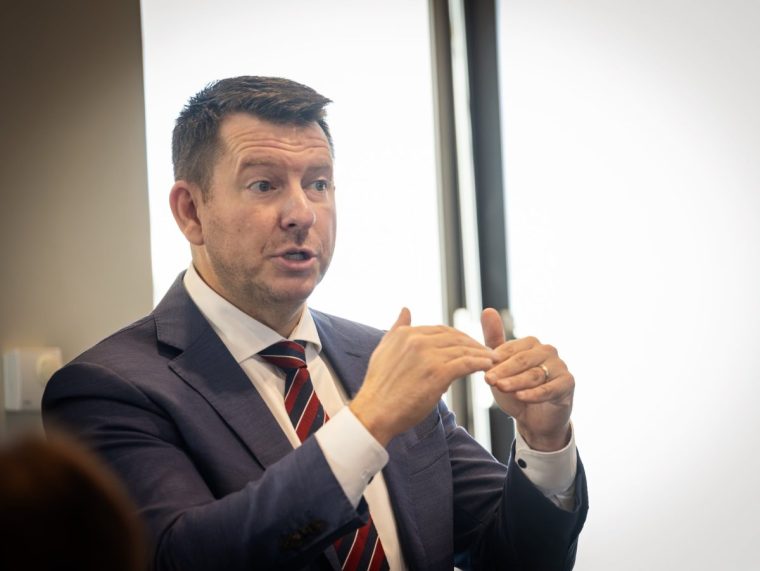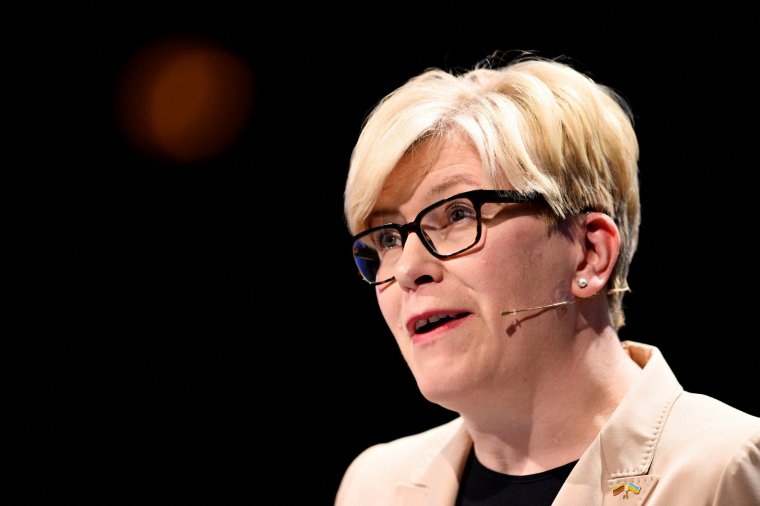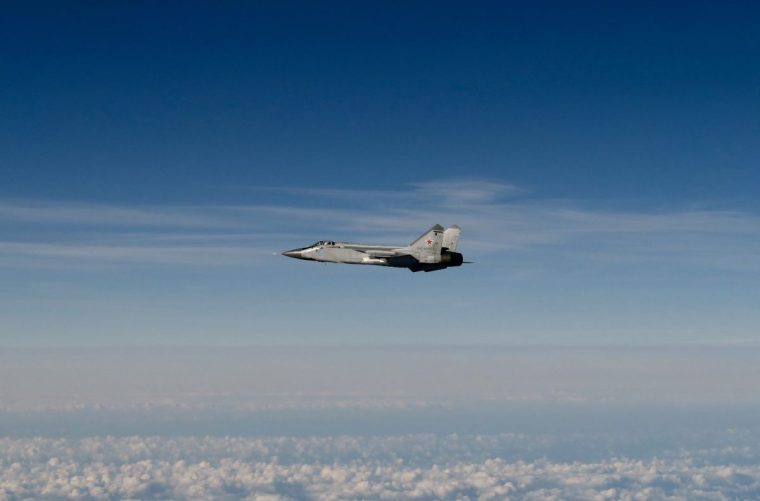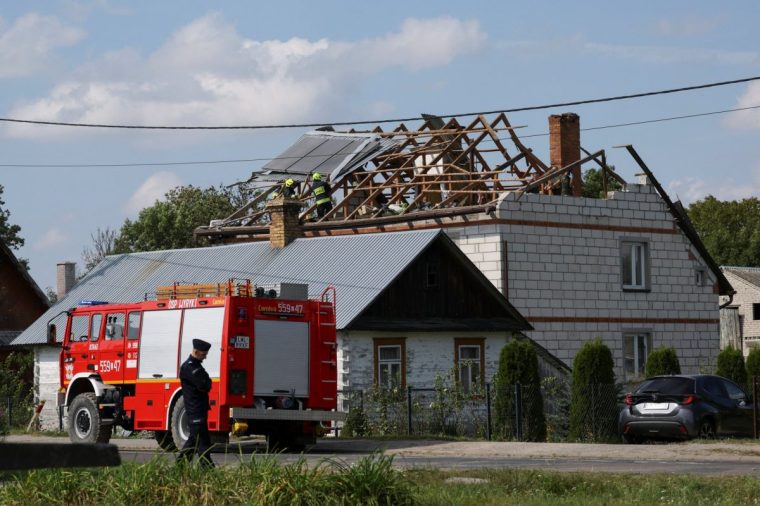Vladimir Putin is “completely reckless” and needs to be shown that incursions into Nato territory will be met with a firm response, Lithuania’s former prime minister, Ingrida Šimonytė, told The i Paper.
Over the past few weeks, Russian drones and fighter jets have violated the airspace of three Nato members: Poland, Romania and Estonia, causing Nato aircraft to be scrambled in response.
On Monday, the military alliance gathered for the second time this month, saying it would use “all necessary military and non-military tools” to deal with a “wider pattern of increasingly irresponsible Russian behaviour”.
In the Baltics, the mood is tense and attitudes are hardening further, with leading figures saying that countries must react.
An Estonian foreign affairs official told The i Paper: “If we fail to defend the most basic principles of international law in our backyard, then not only will our credibility globally be damaged, our ability to defend those principles further in Europe will be diminished.”
Russian provocations
Tensions on Nato’s eastern flank have been rising since 10 September, when around 20 Russian drones entered Polish airspace, travelling hundreds of miles into the country. At least four were shot down by a combination of Polish and Nato aircraft, while others crashed into the ground.
Three days later, a Russian drone flew 10km into Romanian territory, before leaving unscathed 50 minutes later. Facing criticism from Romanian media, the defence ministry said it had “assessed the collateral risks and decided not to open fire”.
Last Friday, three Russian MiG-31 fighter jets spent 12 minutes inside Estonian airspace, travelling 10km into the small Baltic state before being escorted out by Nato aircraft.
Speaking from his department’s headquarters in Tallinn, Jonatan Vseviov, secretary-general of the ministry of foreign affairs in Estonia, told The i Paper the planes were “frankly seconds flight time-wise from this building”.

Vseviov said the Russian incident was “provocative behaviour” and an “existential” issue for Estonia. “The Russians flying around our airspace is not a small deal,” he said, adding that it required a robust response.
Setting limits
Šimonytė, Lithuania’s prime minister from 2020 to 2024, warned the pattern of escalation would continue unless Nato sets Russia “real limits” through force.
“They [Russia] are demonstrating that they don’t give a shit about how we see this, what we say, and what are the red lines – because there are none,” Šimonytė, who continues to serve as an MP, told The i Paper. “There needs to be a response.”
Earlier this week, Lithuania’s parliament granted its military the power to shoot down any unmanned aircraft violating its airspace after two Russian UAVs crashed on its territory in July.
Šimonytė said Lithuania and other countries on Russia’s periphery need to adopt a “completely different approach” to deal with the threat of drone warfare.

“If there are hundreds of drones arriving in a short time period, will there be enough F-35s to shoot them down?” she asked. “We need the measures, the gadgets, the things that are so successful in Ukraine, because the future wars will look like that.”
‘Now is the time to do something’
Across Tallinn, Estonia’s capital, there is an undercurrent of fear mixed with defiance about the threats from Russia.
In a briefing for foreign press ahead of a budget meeting, Prime Minister Kristen Michal said that security and defence was a “first priority” for his government.

The mood also extends to the country’s tech industry, which includes a significant number of Ukrainians who have set up firms in Estonia in recent years, thanks to its e-residency programme, which allows entrepreneurs to establish businesses with relative ease.
Sten Tamkivi, a partner at venture capital firm Plural, said that defence tech was a major contributor to the Estonian economy. Estonia has around 110 new defence companies that have been set up since Russia’s invasion of Ukraine, Tamkivi said, around half of which are built by foreign founders who have moved to the country.
“We’re used to having this neighbour [in Russia], and so there’s less surprise about how they behave,” he told The i Paper.
The entrepreneur and tech founder said that Western Europe’s approach to Russian aggression was “if we stand really quiet, maybe they’ll go away”.
By contrast, for countries on Nato’s eastern flank, Russia’s repeated incursions have “seen people get energised”, he said. “They go: ‘Now is the time to do something’.”

Following Turkey’s lead
Last month, Lithuania called on Nato to help strengthen its internal air defences, following the two drone incursions in July. In a letter to Nato’s secretary-general, Mark Rutte, defence minister Dovilė Šakalienė and foreign minister Kęstutis Budrys requested the deployment of additional, “even experimental”, capabilities to address aerial threats.
Šimonytė told The i Paper that Nato could also learn from the example of Turkey, which shot down a Russian Su-24 attack aircraft on the border with Syria in November 2015.
“We had all sorts of debate about whether something terrible would happen, but nothing did because somebody, in this case [Turkist president Recep Tayyip] Erdogan, showed Putin that there were limits, real limits,” she said.

The incident sparked a bitter row between Turkey and Russia, with Moscow announcing sanctions and deploying advanced S-400 surface-to-air missiles to Syria in the aftermath.
But both sides ultimately pulled back from a military confrontation, after the Turkish leader apologised for the incident in a letter to Putin the following year.
Russia lifted the sanctions in 2017, and the countries remain economic partners despite Turkey’s membership of Nato and military support for Ukraine.
Vseviov, the Estonian foreign affairs official, said that Russia’s current military position in Ukraine also does not have to be the end goal. “Pushing Russia back into Russia is doable,” he said. As evidence, he pointed to Estonia’s own history of overcoming Russian occupation.
The Trump impact
In Šimonytė’s view, the uptick in military incursions can be linked directly to last month’s Alaska summit between Putin and President Donald Trump.
Putin was welcomed onto US soil in full view of the world, having largely been shunned by Western countries since the full-scale invasion of Ukraine in 2022.
The Russian president left feeling emboldened, Šimonytė said, having scored a major victory without giving up any concessions on Ukraine.
“As soon Putin saw that Trump had no authority and no plan to make Ukraine give in… there was nothing much to talk about any further, and he started this escalation immediately,” she said.
In a surprise turn, Trump signalled a major shift in his position on the war earlier this week, stating that Kyiv could win back all the land it has lost to Russia. Trump has previously suggested that a peace agreement would likely involve Ukraine giving up some territory.
But Ukraine and its European allies should be “cautious to celebrate”, Šimonytė said, adding: “We’ve seen all sorts of statements so far and, most probably, we’ll see more to come. It’s the action that will or will not follow that matters.”
